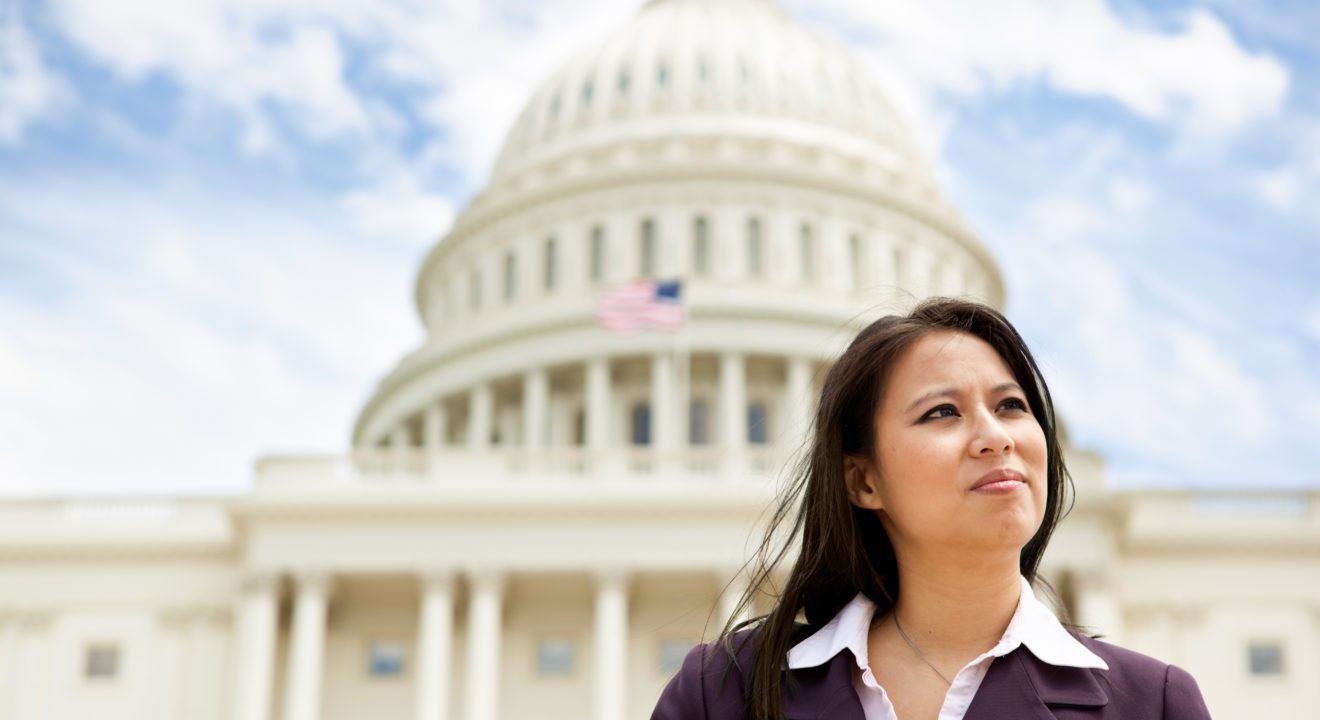Politics April 29, 2017


This list is too short.
And so is the timeline of women’s involvement in American politics, from a forgotten thinker in the Founding to the country’s first female presidential nominee.
Here’s a quick timeline of women’s involvement in American politics:
1776: Abigail Adams admonishes her husband to “Remember the ladies” as he and the other Framers of the Constitution lay out the government of the United States. Though she doesn’t lay out exactly what she means by her entreaty, Mrs. Adams’s letter to her husband shows the female half of “America’s first power couple” asking for liberty for all its citizens:
“I long to hear that you have declared an independency. And, by the way, in the new code of laws which I suppose it will be necessary for you to make, I desire you would remember the ladies and be more generous and favorable to them than your ancestors. Do not put such unlimited power into the hands of the husbands. Remember, all men would be tyrants if they could. If particular care and attention is not paid to the ladies, we are determined to foment a rebellion, and will not hold ourselves bound by any laws in which we have no voice or representation.”
1872: Hold up, Hillary Clinton. Though the current presidential nominee is the first woman to be featured on a major party ticket, Victoria Woodhull was the first woman to run for president. Unfortunately, the leader of the Equal Rights Party was too young to run, so no one got the chance to vote for her.
1887: Susanna Madora Salter was the United States’s first woman mayor (and the first woman elected to any of the country’s political offices) serving in Argonia, Kansas, a town of fewer than 1000 residents. The Kansas Historical Society says her nomination was a joke that backfired right into the annals of history.
1916: Though she couldn’t vote in national elections, Jeannette Rankin, a Montana native, was elected to Congress in 1916. Rankin was a peace-maker, voting against entering World War I, and later, World War II. She was instrumental in forming the legislation that would lead to a universal right to vote.
1920: The 19th Amendment is ratified by the states, giving women the right to vote across the nation. Elizabeth Stanton and Lucretia Mott started the party at the Seneca Falls Convention in 1848, and women suffragists like Susan B. Anthony joined in, demanding the vote through conventions, political rallies, marches and protests.
1925: Nellie Tayloe Ross succeeds her late husband, who was running for reelection as the governor of Wyoming, to become the country’s first female governor. She stood for prohibition, saw her state through a drought, coal mining accidents and the aftermath of a drop-off in oil sales.
1933: President Franklin D. Roosevelt appoints Frances Perkins as the first member of a presidential cabinet. As the Secretary of Labor, she fought for labor reform after the 1911 Triangle Shirtwaist Factory Fire made it clear that working conditions for men, women and children were untenable.
1978: Fun fact: women served as senators before 1978. But they all filled in for their senator husbands when they passed away. Nancy Landon Kassebaum was the first woman to be elected to the Senate on her own.
1981: Sandra Day O’Connor becomes the first woman to serve on the Supreme Court after being appointed by Ronald Reagan. O’Connor is remembered as a “centrist” justice, voting in favor of abortion rights while effectively placing George W. Bush in the White House with her decision in the election case, Bush v. Gore.
2007: U.S. Rep. Nancy Pelosi is elected as Speaker of the House, giving her the unofficial title of “highest-ranking woman in the history of U.S. politics,” as well. In her 4-year tenure, she advocated for free birth control, an end to “abstinence only” sexual education programs and universal health care.
2016: Former Senator and Secretary of State Hillary Clinton is the first woman candidate to be nominated for president. Her campaign, though not without controversies connected to the Benghazi email scandal and the monetary history of the Clinton foundation, aims to present support for all women, exemplified in her “I’m With Her” slogan. Clinton plans to support women with abortion rights, birth control, wage equality and childcare reform.
Today, women make up about 20 percent of local, state and federal government leaders, according to the Center for American Women and Politics. Three women have served on the Supreme Court. Seven have been cabinet members. Time will tell if 2016 will be the year CAWP can add “president” to the list of political offices women have held.